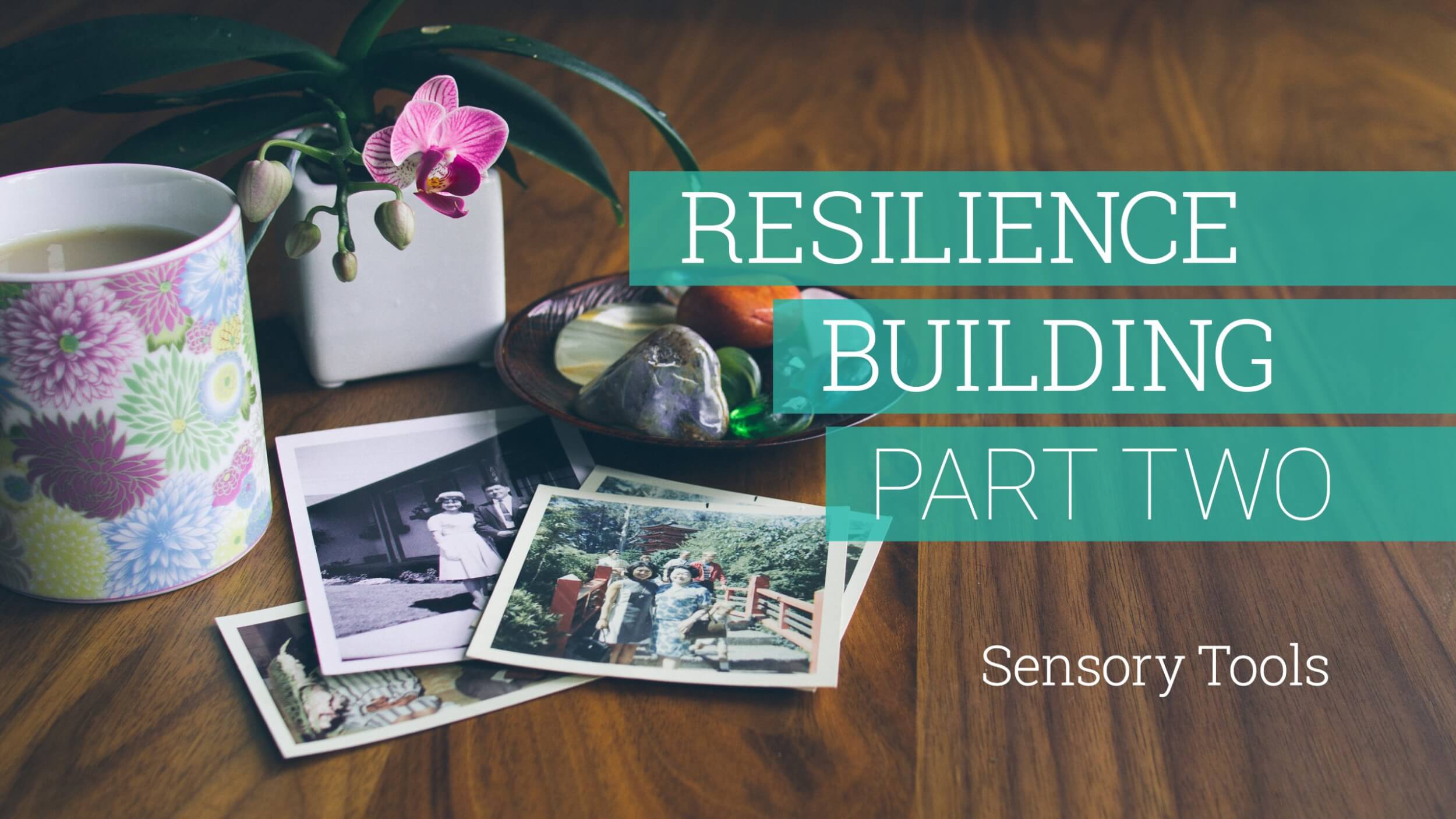
What are Sensory Tools and Why are they Helpful?
Sensory tools refer to using your five senses to regulate, or bring balance to, the nervous system. Regulating the nervous system is also referred to as grounding. Using these tools helps to build resilience.
Last week I talked about turning inward and scanning the body as a way to regulate the nervous system. Sometimes though, focusing on our bodies when we are anxious can make us more aware of our stress which can lead to feeling overwhelmed. When tuning in becomes overwhelming, I recommend orienting your attention outward, also known as external orienting. Using your five senses, bring your attention to what is happening in the present moment around you.
Sight
What do you see as you look around the room? Notice colors and patterns. When something pleasing catches your eye, stay with it for a few moments. I usually find my eyes going towards the window above my desk. There is something very soothing to me about seeing green leaves rustling on the trees and cloud formations against a blue sky. You can keep an album of photos in your phone of people or places that are calming to look at. Cut out pictures from magazines of relaxing scenes and keep them in a nearby drawer. Let your eyes nurture a sense of tranquility when you are feeling agitated.
Hearing
What do you hear right now? See if you can identify five different sounds. Maybe there is a car driving by your house, a voice in the next room, the hum of the refrigerator. Perhaps some music is playing in the background. When we slow down in this way and pay mindful attention to our surroundings, we often notice things we wouldn’t normally be aware of. Right now I hear the chirping of birds at the feeder in the backyard, a small desk clock ticking, a gardener’s leaf blower in the distance, and my kids playing down the hall. Sometimes simply listening to silence is restorative.
Taste
You can use your sense of taste to bring calm into the body. My go-to for this sensory tool is a cup of Earl Grey tea with soy milk. Other people might gravitate toward something sweet; others might prefer something salty. A favorite comfort food from childhood is often a good choice. As you take a bite or a sip, follow the sensation of the food or drink in your mouth and how it feels in your body as you swallow it. Bring yourself into this moment and savor the flavors that foster a sense of ease.
Smell
Scents can also be very calming. You can put a few drops of a favorite essential oil into a diffuser, or light some incense or a scented candle. If you have flowers in the yard, you can enjoy their fragrance, or just take a deep breath of fresh air.
Touch
The sense of touch can be very grounding. Notice the textures of items within your reach. Is what you are feeling smooth, soft, bumpy, or rough? What about the temperature? I notice that when I touch the desk in front of me, the wood feels solid and cool. But when I touch my dog, who is at this moment asleep on my lap, her body feels warm and soft and gently rises and falls with each breath. You might relax into the coolness of your pillow as you lay down to sleep. Thinking about how something feels to the touch can reduce worry or rumination; it can bring you back into the present moment.
Bonus Tool
In addition to sight, hearing, taste, smell, and touch, we have what is often called our sixth sense: Intuition. You know that sensation when you have a hunch or some hazy idea that hasn’t yet formed into a clear insight? That’s your unconscious mind offering awareness to your conscious mind. It may cause reflexes in the body, like a shudder or a smile. You can trust your intuition. Often we know something before we know it. With mindful examination, this knowledge can help you decide what to do next to restore balance, calm, and grounding.

Using Sensory Tools to Regulate the Nervous System
Sensory tools are grounding when we take the time to slow down and pay mindful attention to what we take in through our senses. As you practice this grounding strategy over time, you will begin to identify which senses and which objects are the most calming for you. Some people have a preferred sense that they use to regulate; others benefit from using more than one at a time. For example, you might focus only on listening to sounds, such as a favorite piece of music. Or you might combine looking and listening to appreciate an amusing moment outside a window–squirrels playing in the grass with their little clicks and squeaks. Scents and flavors can also enrich each other in pleasing ways. As you find comfort in the taste of your favorite warm beverage, also bring your attention to its smell.

How to Use Sensory Tools with Kids
When introducing sensory tools to your kids, have them practice using each of their senses when they are relatively calm and relaxed. A simple mindfulness practice for kids is to ask them to name five things they can see, four things they can hear, three things they can feel, two things they can smell, and one thing they can taste. Later, if they are feeling anxious, you can remind them of the sensory tools that they played with earlier and invite them to engage their senses again. With some practice, your kids will find them more accessible and useful.
You can also create a basket of small items that are pleasing to their senses. I’ll write more about mindfulness baskets soon, but in the meantime, collect some items from your kids’ bedrooms or around the house. Playdough, a soft stuffed animal, photos of loved ones, squishy balls, smooth stones, and bubbles work well. This can be a basket that you bring out to strengthen their muscles of mindfulness and grounding. Watching them grow emotionally stronger is a wonderful experience.
Time to Reflect
As you go through your day, notice when you are feeling activated. You can do a body scan (see last week’s blog on tracking), and when you notice signs of stress or overwhelm in your body, practice using your senses to come back to a calmer, more grounded state. This type of mindful curiosity and awareness of our surroundings gets us out of our noisy heads, soothes the body and spirit, and builds our emotional resilience. And it helps our children, too.
How will you use your senses this week to regulate and bring balance to your nervous system? Which sensory tools are the most helpful to you, and which ones do your kids like best? Keep a list of your favorites and practice them the next time you are feeling anxious.
